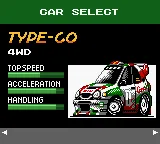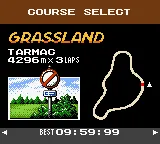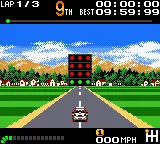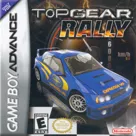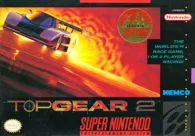Top Gear Pocket
Description official description
Rally race through the city streets, grasslands and sandy terrain against eight other racers (or a friend) to the finish line. The higher you rank at the end of each race, the more new tracks you open up (including tracks full of ice). Time trial mode also allows you to test the time on each track.
12 cars are available to drive, each with different handling and speed abilites and you can choose to race each car either with manual or automatic gearbox changes. The in-built rumble feature of the cart also vibrates to each crash and burn you make.
Spellings
- トップギア・ポケット - Japanese spelling
Groups +
Screenshots
Credits (Game Boy Color version)
13 People (8 developers, 5 thanks)
| Graphic Design | |
| Track Layout | |
| Music & Sound Effect |
|
| Programmer | |
| Special Thanks | |
| Planning | |
| Directors | |
| Product |
|
| Producer | |
| Executive Producer |
Reviews
Critics
Average score: 66% (based on 10 ratings)
Players
Average score: 3.9 out of 5 (based on 4 ratings with 0 reviews)
Be the first to review this game!
Analytics
Related Sites +
-
IGCD Internet Game Cars Database
Game page on IGCD, a database that tries to archive vehicles found in video games.
Identifiers +
Contribute
Are you familiar with this game? Help document and preserve this entry in video game history! If your contribution is approved, you will earn points and be credited as a contributor.
Contributors to this Entry
Game added by Kartanym.
Additional contributors: formercontrib, Parf, Ms. Tea, Rockin' Kat, Victor Vance.
Game added April 15, 2003. Last modified October 28, 2024.




